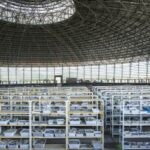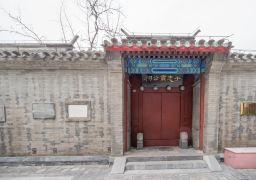Anyuan Fort is located at the southern foot of Zhaobao Mountain, beneath the Wulong Ridge. Before the Zhenhai Campaign of the Sino-French War in the 10th year of the Guangxu Emperor (1884), “Anyuan” was merely a small artillery battery equipped with three Armstrong muzzle-loading cannons, each firing 80-pound shells. Officially constructed in the autumn of the 11th year of Guangxu (1885), the fort is circular with an inner diameter of 16.5 meters, a height of 6 meters, and a wall thickness of 2 meters. It features both front and rear gun ports; the front port faces the sea to the east, while the rear port faces the river to the west. Originally, it housed a German-made cannon, which has since been removed. The center of the fort is equipped with a circular rotating iron track, allowing the gun to rotate along the track in both directions. There is a tunnel on the northwest side, 5 meters high and 3 meters wide, for personnel entry and exit. The fort was constructed using a mixture of yellow mud, sand, and lime, and is rumored to have been mixed with glutinous rice porridge, making it extremely sturdy. It faces off across the river with the “Pingyuan” and “Jingyuan” forts located at the foot of Jinji Mountain on the south bank. The top of the platform has been destroyed, but the walls still stand. During the Anti-Japanese War, the doors and the top were modified with cement. In July 1981, it was listed as a key county-level cultural relic protection unit. On December 12, 1989, it was designated as one of the key provincial-level cultural relic protection units of Zhejiang Province, a part of the Zhenhaikou Coastal Defense Site. The opening hours are all year round from 08:00 to 16:30.
Anyuan Fort
Anyuan Fort is located at the southern foot of Zhaobao Mountain, beneath the Wulong Ridge. Before th[...]









